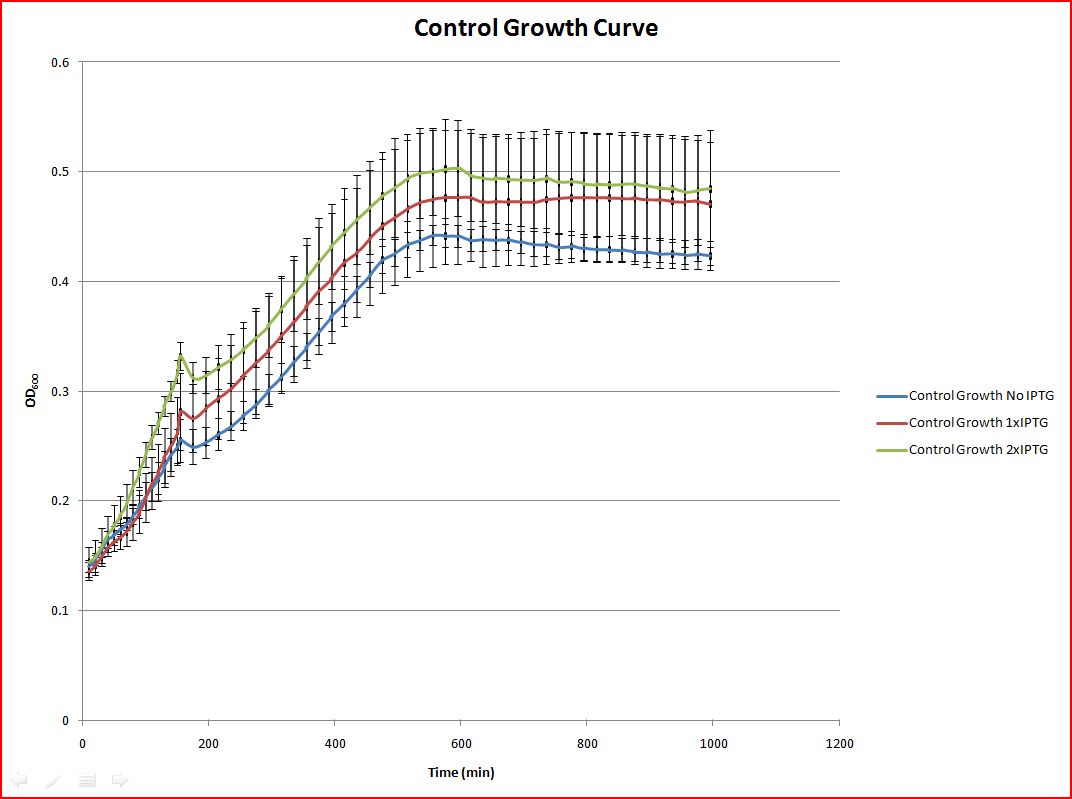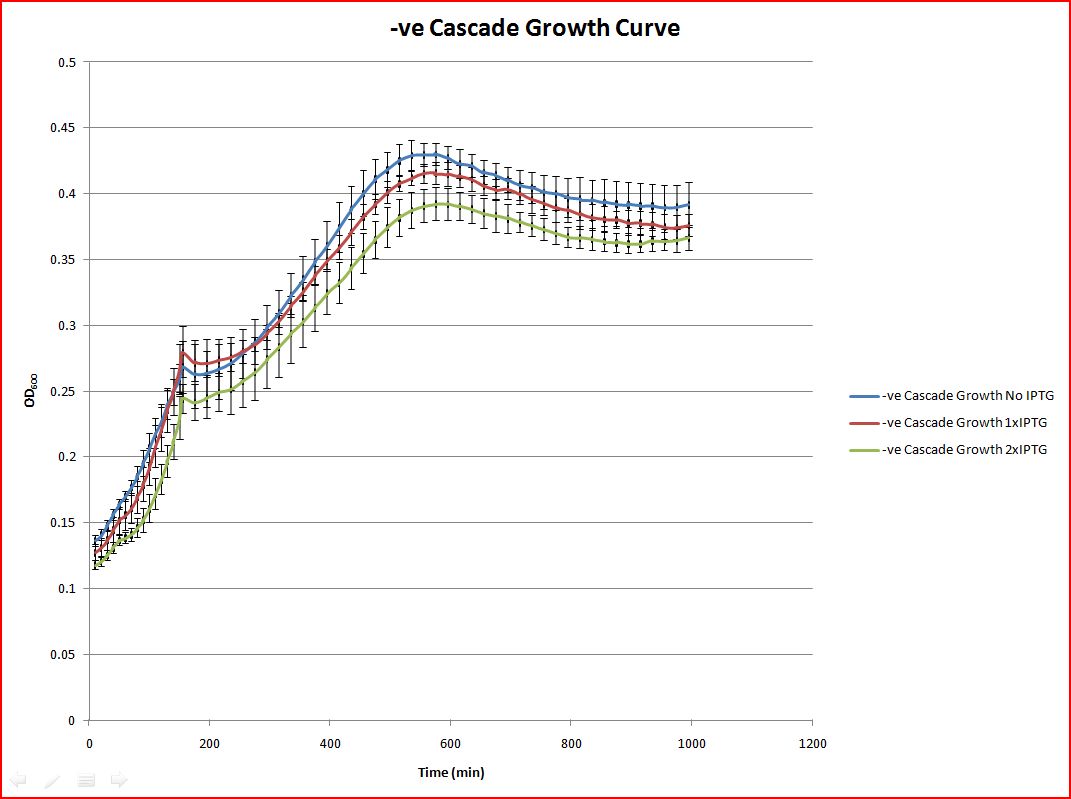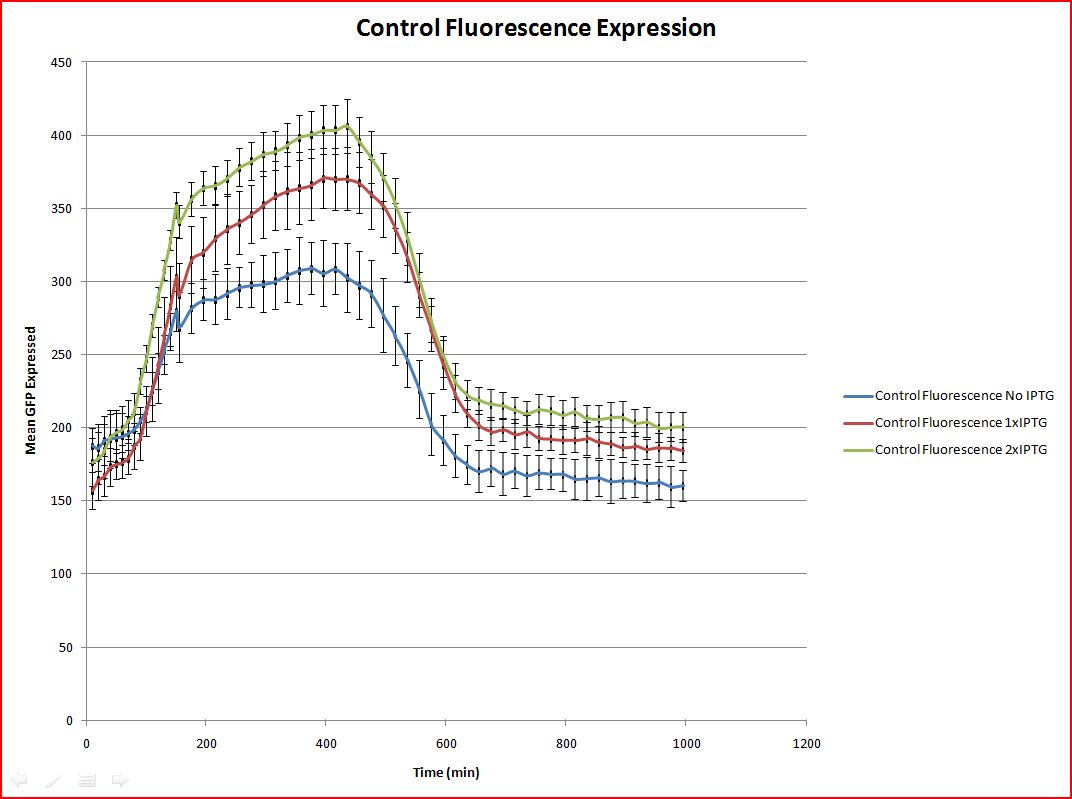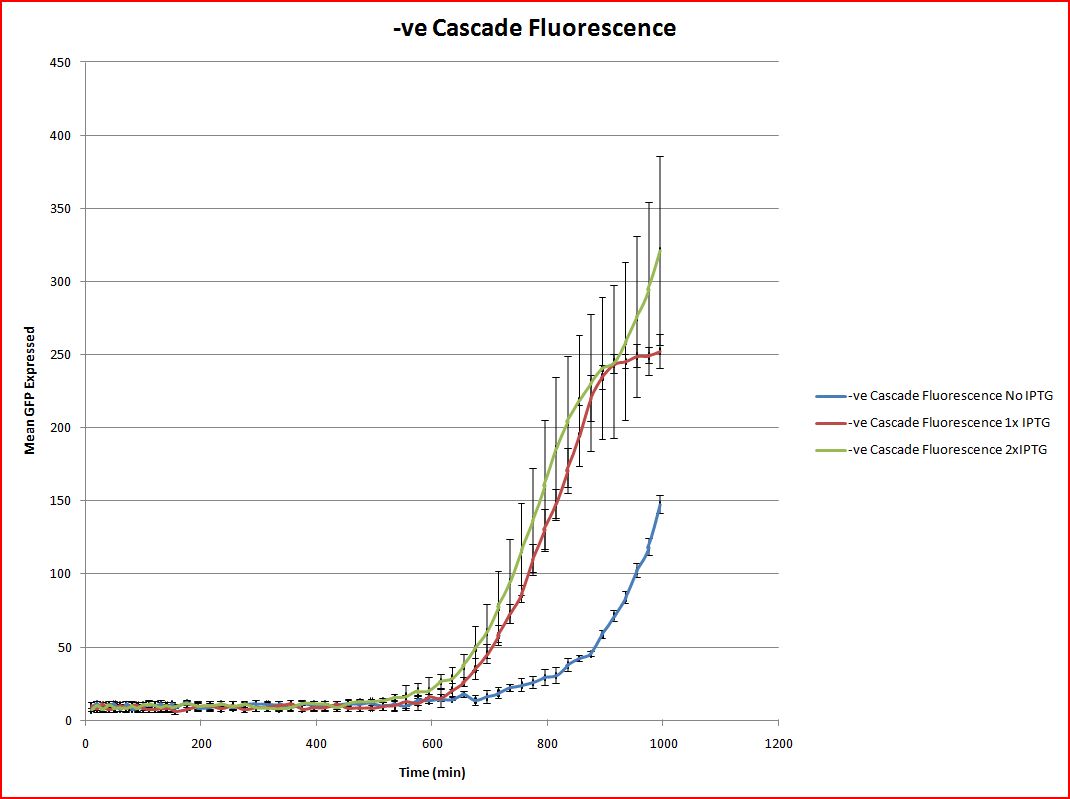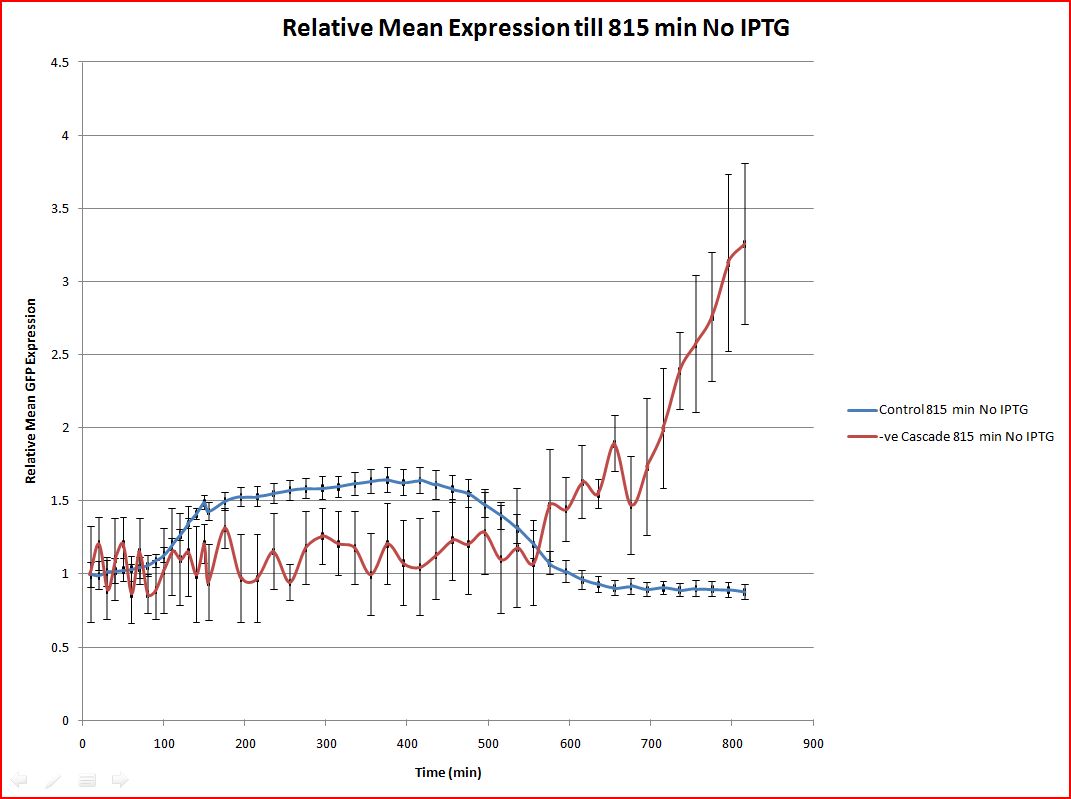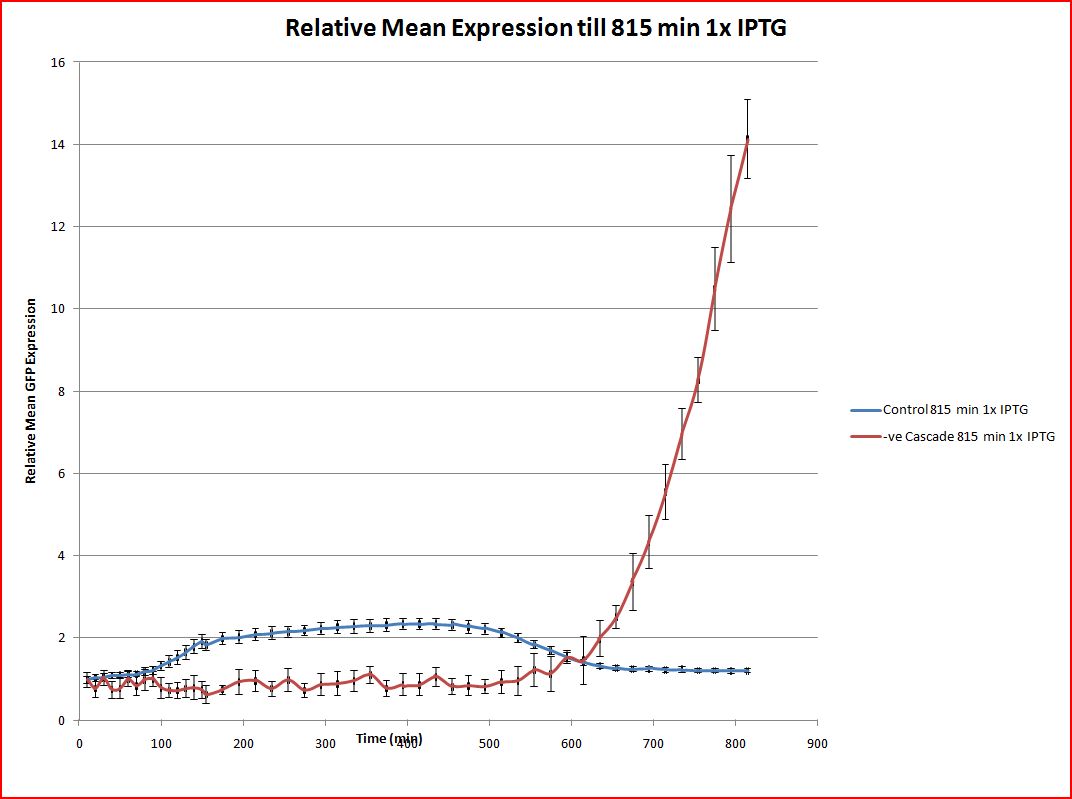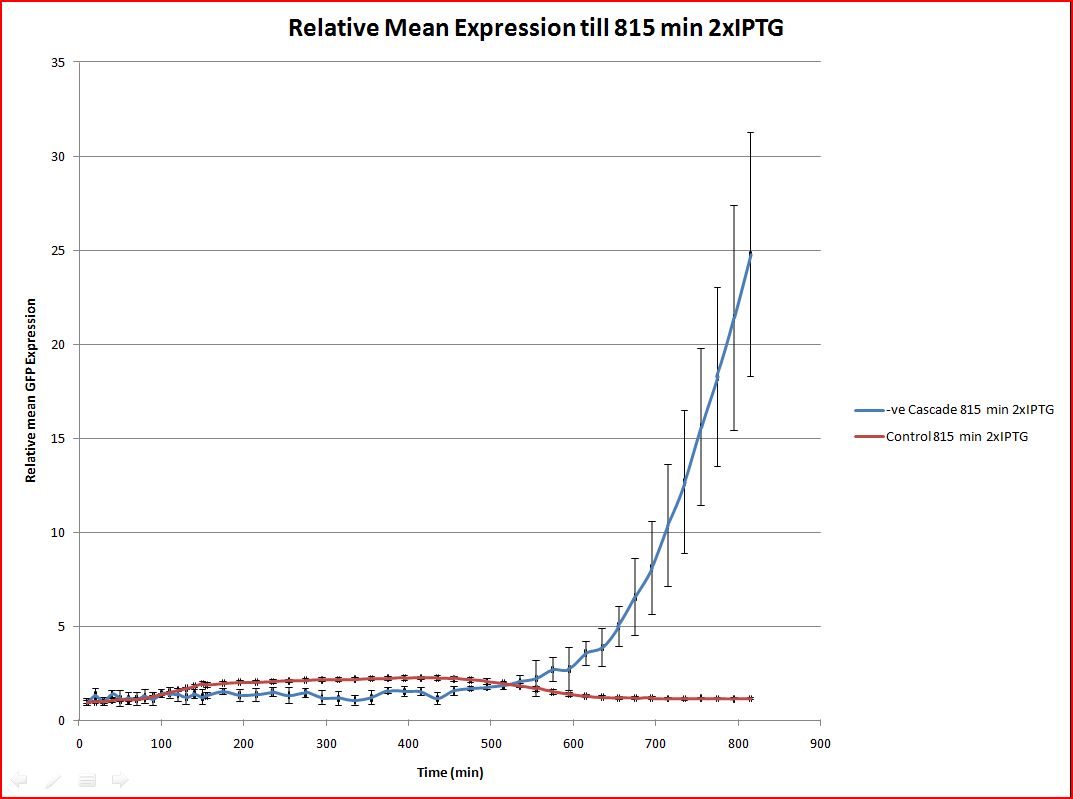Team:TUDelft/Delay Results Continue
From 2009.igem.org
| Line 15: | Line 15: | ||
[[Image:TUDelft_Delay_Relative_Mean_815_min_2x_IPTG.JPG|thumb|left|250px| '''Fig. 7:''' Comparison of Relative mean curves in 2x IPTG condition]] | [[Image:TUDelft_Delay_Relative_Mean_815_min_2x_IPTG.JPG|thumb|left|250px| '''Fig. 7:''' Comparison of Relative mean curves in 2x IPTG condition]] | ||
| - | Both the figures 1 and 2 show the growth curves of | + | Both the figures 1 and 2 show the growth curves of control and negative cascade. They also show that the readings were taken till the stationary phase of growth (995 mins). Also both negative cascade and control have shown same growth pattern. This is very good for our fluorescence measurements interpretation. |
In figure 3 the fluorescence (GFP) measurements of control is shown. We can see very clearly that IPTG induction has an effect on the increasing change in fluorescence. Also the fluorescence decreases after a period which show that GFP gets degraded since it has LVA tag and also IPTG has been fully consumed. Also in figure 4 the negative cascade starts to produce fluorescence very lately around 600 minutes. This shows that Delay device works fine. | In figure 3 the fluorescence (GFP) measurements of control is shown. We can see very clearly that IPTG induction has an effect on the increasing change in fluorescence. Also the fluorescence decreases after a period which show that GFP gets degraded since it has LVA tag and also IPTG has been fully consumed. Also in figure 4 the negative cascade starts to produce fluorescence very lately around 600 minutes. This shows that Delay device works fine. | ||
Revision as of 17:05, 21 October 2009
Fluorescence Experiments
At first we guessed from the modelling that our delay device would start delay in less than 2 hours. Hence the fluorescent reading after IPTG induction (0.1mM and 0.2mM)(see protocol) in the 96 well plates were taken only for 2 and half hours and the readings were not giving promising results. Hence with the help our supervisors to find which part of the growth curve are we in, we ran an overnight experiment with continuing the same experiment for 14 hours more, hence in total we would get a result for 16 and half hours.
The results for the positive control and negative cascade (experiment) are given in this xls attached []. The results were consolidated and shown in graphs below.
Both the figures 1 and 2 show the growth curves of control and negative cascade. They also show that the readings were taken till the stationary phase of growth (995 mins). Also both negative cascade and control have shown same growth pattern. This is very good for our fluorescence measurements interpretation.
In figure 3 the fluorescence (GFP) measurements of control is shown. We can see very clearly that IPTG induction has an effect on the increasing change in fluorescence. Also the fluorescence decreases after a period which show that GFP gets degraded since it has LVA tag and also IPTG has been fully consumed. Also in figure 4 the negative cascade starts to produce fluorescence very lately around 600 minutes. This shows that Delay device works fine.
Also from the above graphs we found that the GFP is produced in non induced E.coli(K12) cells (both control and negative cascade containing cells) which is supposed to have LacI repressor. We think the reason could be the LacI repressor produced by the cells were not enough to repress the higher number of pLacI in the plasmids. hence to characterize the negative cascade plasmids we used relative mean (mean/mean at time of induction) and constructed the comparison graphs of control and negative cascade samples under the three conditions (No IPTG, 1xIPTG and 2xIPTG) which are shown in figures 5,6 and 7.
 "
"
